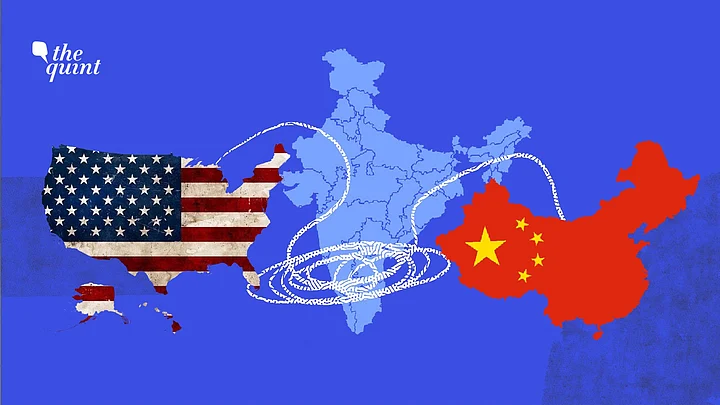As the balance of power shifts from the “Global West” to the “Global South” i.e. from United States to China, the global governance institutions underpinning the international system based on principles of multilateralism, seem to be under severe stress. However, as the era of US dominance gradually recedes, China is not ready to pick up the mantle just yet. It is this transitory phase that presents a unique opportunity for India that will determine whether the world stays multilateral or succumbs to the hegemonic world vision of China.
US Looks Inward, China Outward
Throughout history, great powers have declined and fallen. The United States of America has enjoyed a remarkably long period of dominance. This has been mainly because the global governance framework in the post war world was underpinned by US economic might, guaranteed by US military prowess, propagated by the Bretton Woods institutions and legitimised by ideals like democracy, liberalism and a world order based on rules internalised by nations across the world.
As China seeks to re-shape this global order to its advantage, many observers feel that this process is bound to lead to a major shift in the balance of power – to America’s disadvantage. China—while accepting the current global governance institutions like the United Nations, World Trade Organisation, World Bank etc.—seeks to transform the underlying character and leadership structure of these institutions to suit its hegemonic designs.
The process has been accelerated with US turning inwards under Trump and China looking increasing outwards under Xi, with the Belt and road initiative (BRI) being its flagship project.
However, despite the success of China in making inroads into South East Asia, Central Asia, South Asia, the Middle East and Europe through the BRI project, it is also true that China lacks the necessary economic, military and particularly discourse power to truly take on the mantle of global leadership from the US, just yet.
China’s Preparations to Lead the Global Order
China over the past four decades has worked steadily to increase its economic heft and the results are for everyone to see with China having overtaken the US economy in PPP terms in 2014, and all set to overtake in nominal terms by early 2030’s at the current growth levels. Ever since Xi took over in 2013, as part of his “China Dream”, the People’s Liberation Army (PLA) has been lavished with money and arms.
China’s military spending rose by 83% in real terms between 2009 and 2018, by far the largest growth spurt in any big country. Xi’s vision involves fully modernising the PLA by 2035 and making it the world’s best by 2050.
Hence, the clock is already ticking with China well on its way to be in a dominant position as far as hard power is concerned (consisting of military and economic might) in the next decade or so.
However, in order to truly replace the current Global order centered around multipolarity, it needs to substantially invest in its soft power i.e. discourse power. In his remarks at the 19th Party Congress, Xi Jinping articulated the objective of building China into "a global leader in terms of composite national strength and international influence", which comprises of the troika of economic power, military power and discourse power.
Why It’s ‘Advantage India’ from 2020 to 2035
It is this very period from 2020 to 2035 during which China works overtime to acquire the necessary economic, military and ideological might, that India has a unique opportunity to retain the tenets of multilateralism and prevent the world from turning hegemonic at worst and bi-polar at best. Over the next decade and a half, India with its unique geographical position, its demographic dividend, dynamic economy, a liberal-democratic framework and immense “soft power” holds out hope for a continued rule-based multilateral world.
No other nation in the world currently is in a position to acquire sufficient economic and military heft to be able to stand up to China while also having sufficient “soft power” to keep the narrative of a multipolar world alive. India with a civilization older than China’s and the impression of a benign power, along with its strategic location in Asia could become an alternative to the Chinese model.
This can happen if—and this is a big if—it capitalises on its potential to truly become an economic powerhouse for the world sufficiently large to support and enrich regional partners of South Asia as well as sustain a military might that cannot be trifled with.
While it’s true that nations like Germany, Brazil and Japan could also fall in this bracket currently, but, in the long run, they all suffer from disadvantages ranging from an ageing demography, lacklustre economy, unfavourable geography or simply the lack of an alternative narrative around which other nations can rally. Hence, India finds itself at the forefront of the struggle to maintain a rule based global order based on multilateralism but the clock for India is already ticking.
(The author is a graduate of the Harvard Kennedy School and is pursuing his PhD. Economics from IIM Lucknow. He is also a socio-political activist. This is an opinion article, and the views expressed above are the author’s own. The Quintneither endorses nor is responsible for them.)
(At The Quint, we question everything. Play an active role in shaping our journalism by becoming a member today.)
